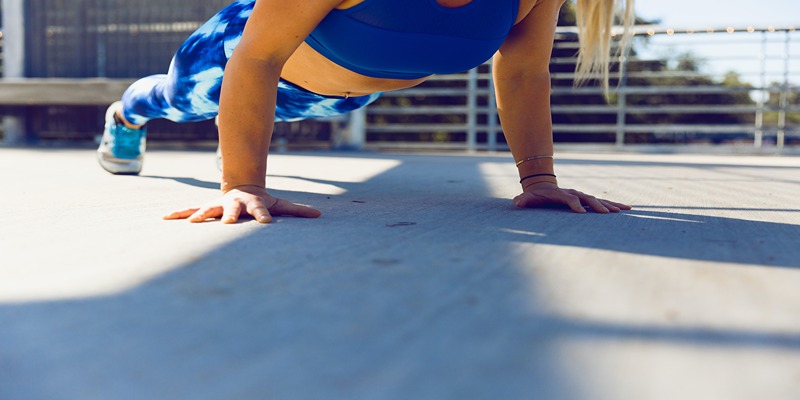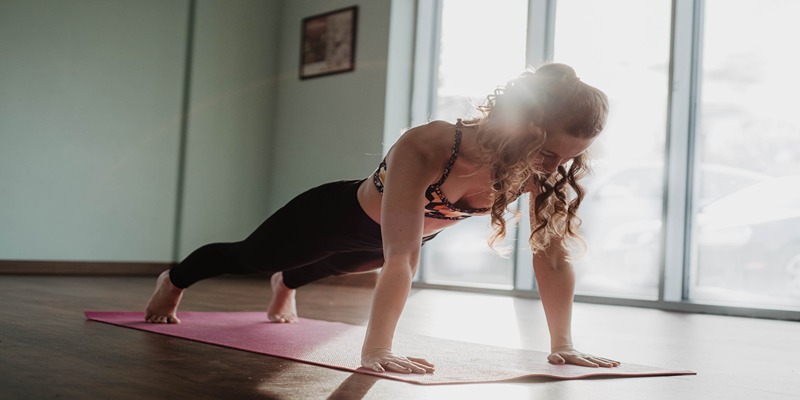
Building a strong core is the first step towards a more mobile and healthier body. It influences almost all of our physical activities, from everyday chores to sporting pursuits, and plays a crucial role in preserving stability, balance, and correct posture. The plank is one of many great options for strengthening your core since it's both effective and flexible. The importance of core strength and its function in general fitness are explored in depth in this guide. Also, we will highlight the plank, a low-impact exercise that builds strong abdominal muscles. You may build a stronger, more robust body by learning to do the plank and focusing on your core.

The Plank Exercise Demystified
How to Perform the Plank Correctly
To execute a plank correctly, begin by lying face down. Prop yourself up onto your forearms, ensuring they're parallel and shoulders are directly over elbows. Extend your legs back, rising onto your toes. Your body should form a straight line from head to heels. Engage your core, glutes, and thighs, keeping your back flat. Avoid lifting your hips too high or letting them sag. Focus on a neutral neck position by gazing down at the floor. Hold this position, maintaining steady breathing, for a desired duration.
Muscles Targeted in the Plank
The plank is a comprehensive exercise targeting multiple muscle groups. Primarily, it strengthens the core muscles, including the rectus abdominis, obliques, and transverse abdominis. Additionally, it engages the muscles in the lower back, enhancing spinal support. The glutes and hamstrings also receive significant activation, contributing to overall stability. Upper body muscles, specifically the shoulders and chest, are involved in maintaining the plank position. This extensive muscle engagement makes the plank an effective and efficient exercise for building core strength and stability.
Benefits of Incorporating Planks into Your Routine
Incorporating planks into your exercise routine offers numerous benefits. Foremost, it strengthens the core, which is pivotal for overall body strength and stability. A strong core enhances balance and posture and reduces the risk of back injuries. Planks also improve muscular endurance, enabling you to perform physical activities for longer periods. Unlike many exercises, planks don’t require equipment and can be modified for various fitness levels. Regularly practicing planks aids in toning the abdominal muscles, contributing to a more defined midsection. This simple yet powerful exercise, when performed consistently, can significantly enhance physical fitness and overall well-being.
Preparing for the Plank
Before you embark on your plank journey, it's essential to adequately prepare your body to maximize the benefits of this core-strengthening exercise. Preparation involves two critical aspects: warming up and ensuring correct body alignment and posture.
Warm-Up and Stretching Exercises
Warming up is crucial to increase blood flow to your muscles and joints, making them more pliable and less prone to injury. Begin with light aerobic activities like jumping jacks or brisk walking to elevate your heart rate. Follow this with dynamic stretches that target the muscles involved in the plank, such as leg swings and arm circles. Focusing on your core, perform gentle torso twists and side bends to prepare your abdominal muscles for the plank's demands. A well-rounded warm-up routine will not only reduce the risk of strains but also enhance your plank performance.
Correct Body Alignment and Posture
Achieving the correct body alignment and posture is fundamental to deriving the full advantages of the plank exercise. Start in a push-up position with your hands directly beneath your shoulders. Ensure your body forms a straight line from head to heels, avoiding any sagging or arching of the back. Engage your core muscles by drawing your navel toward your spine, and keep your glutes and thighs activated. Maintain a neutral neck position, looking down at the floor to avoid straining your neck. By paying attention to these alignment and posture details, you'll create a strong foundation for your plank practice, allowing you to reap its rewards effectively.

Mastering the Plank: Progression and Variations
Beginner Plank Variations
For beginners, starting with modified planks is beneficial. The forearm plank, with knees on the ground, reduces strain while engaging core muscles. Another variation is the incline plank, performed with hands on a raised surface like a bench, focusing on maintaining proper form. This elevation decreases the intensity. The side plank can also be modified for beginners by bending the knees, creating a shorter lever, and making it easier to balance. These variations provide a solid foundation, gradually building strength and stability for more challenging exercises.
Intermediate Plank Variations
Once basic planks are mastered, intermediate variations increase the challenge. The standard high plank, performed on hands with straight arms, intensifies core engagement. Transitioning into a side plank lifts the body’s weight onto one arm and the sides of the feet, targeting the obliques. Adding leg lifts in a forearm or high plank position further engages the glutes and lower back. These intermediate variations not only build a stronger core but also enhance balance and overall muscular coordination.
Advanced Plank Variations
For advanced practitioners, planks can become more dynamic and challenging. The rolling plank involves transitioning from a standard forearm plank to a side plank, then to the other side and back, maintaining a fluid motion. The reverse plank, where one faces upwards, hands beneath the shoulders, and feet on the ground, strengthens the posterior chain. Adding a stability ball or TRX straps and performing planks with feet or hands on these unstable surfaces significantly increases the difficulty. These advanced variations demand greater strength, stability, and concentration, offering a comprehensive workout for the entire body.
Common Mistakes and How to Avoid Them
To maximize the core benefits of the plank exercise, it's essential to address common mistakes and learn how to avoid them. These errors can hinder progress and potentially lead to discomfort or injury. Avoid sagging hips by engaging your glutes and core muscles to maintain a straight line from head to heels. Prevent lower back strain by focusing on keeping your back flat and your core engaged throughout the exercise.
Ensure your elbows are directly beneath your shoulders for optimal support, and maintain steady and deep breathing to prevent dizziness. Keep your neck in a neutral position by looking down at the floor to avoid neck strain. Engage various muscle groups, not just your core, to distribute the workload evenly and avoid excessive plank durations that can lead to muscle fatigue. By addressing these common mistakes and maintaining proper form, you'll derive the maximum core benefit from the plank exercise, promoting stability and reducing the risk of injuries.
Incorporating Planks into Your Fitness Routine
The secret to successfully incorporating planks into your exercise routine is to be consistent and to vary them. As a first step in developing core activation and stability, try including planks in your warm-up or cool-down exercises. Start with shorter intervals (around 20-30 seconds) and gradually lengthen them as your strength develops; furthermore, gradually increase the intensity. To keep the practice interesting and to target different muscle areas, try including different plank variants. For instance, every day of the week, switch up your plank routine by doing forearm, side, and reverse variations.
Conclusion
Motivating yourself and making sure you keep getting better requires measuring your progress in building core strength and creating objectives that you can really achieve. Initiate a habit of consistently documenting the length and variety of your plank workouts. Make note of any improvement in your plank holding time or the intricacy of your plank variations. On top of that, notice whether your general posture and stability improve as you go about your day. If you want to learn more complex plank variants or just increase the time you spend in planks by 10 seconds per week, setting attainable and precise objectives will help you stay on track and enjoy the fruits of your labor.



